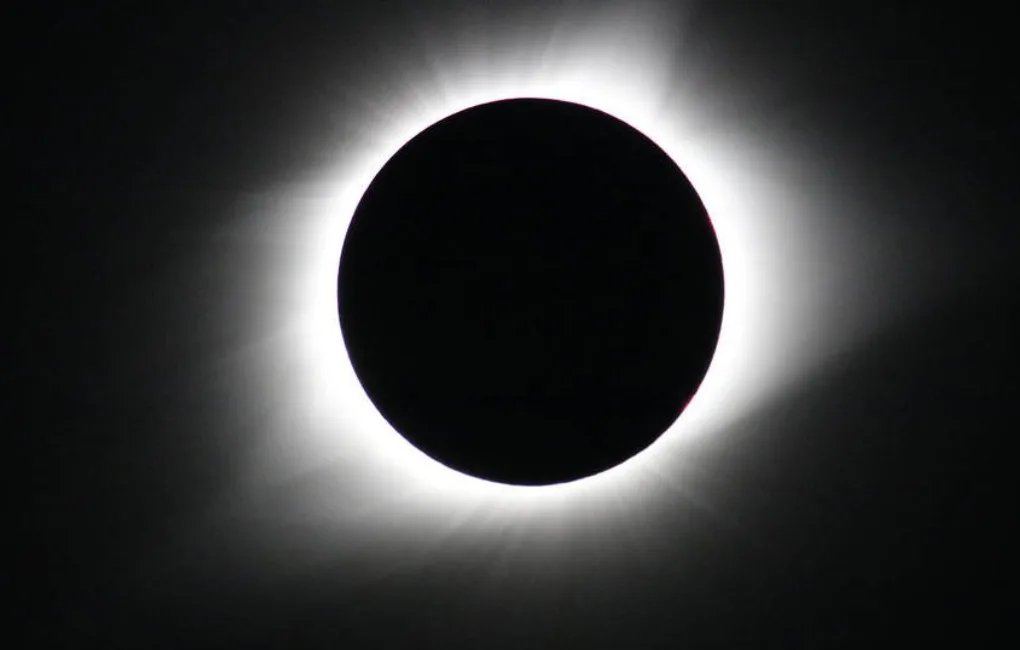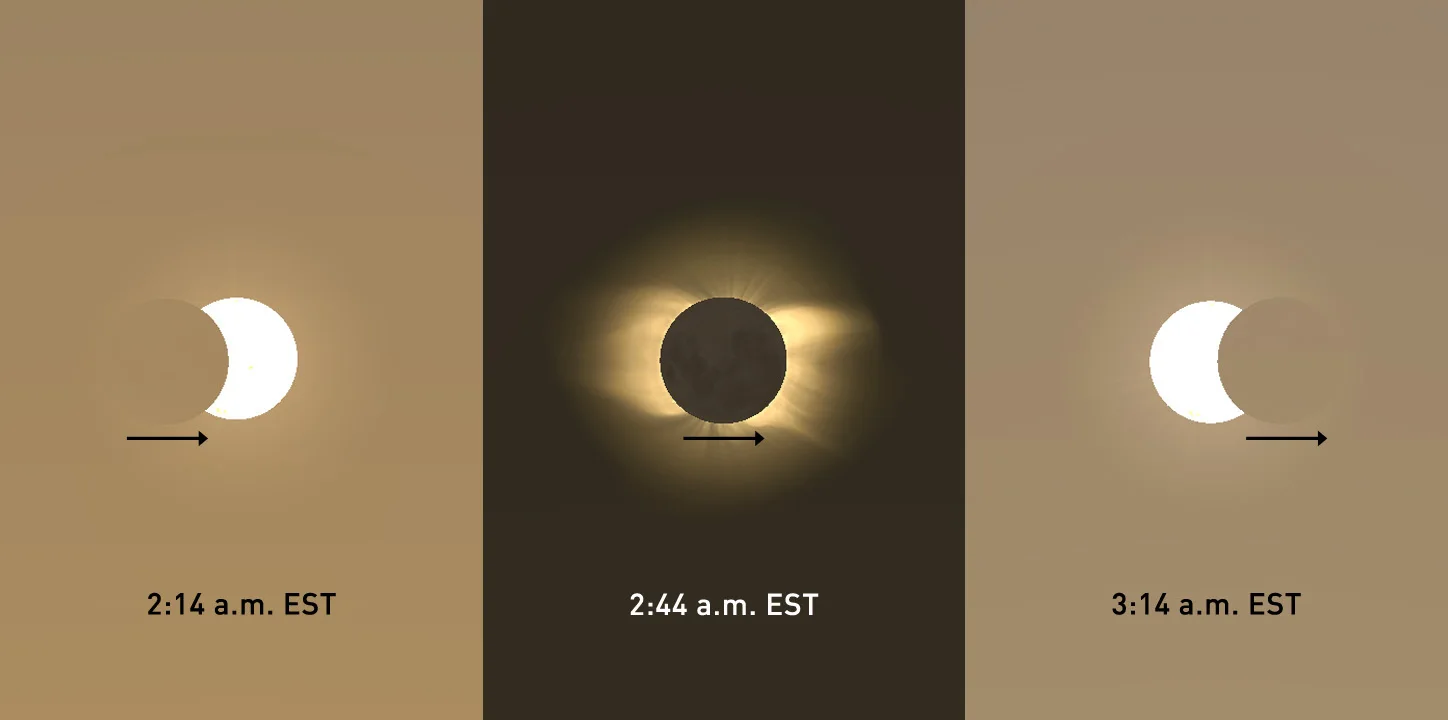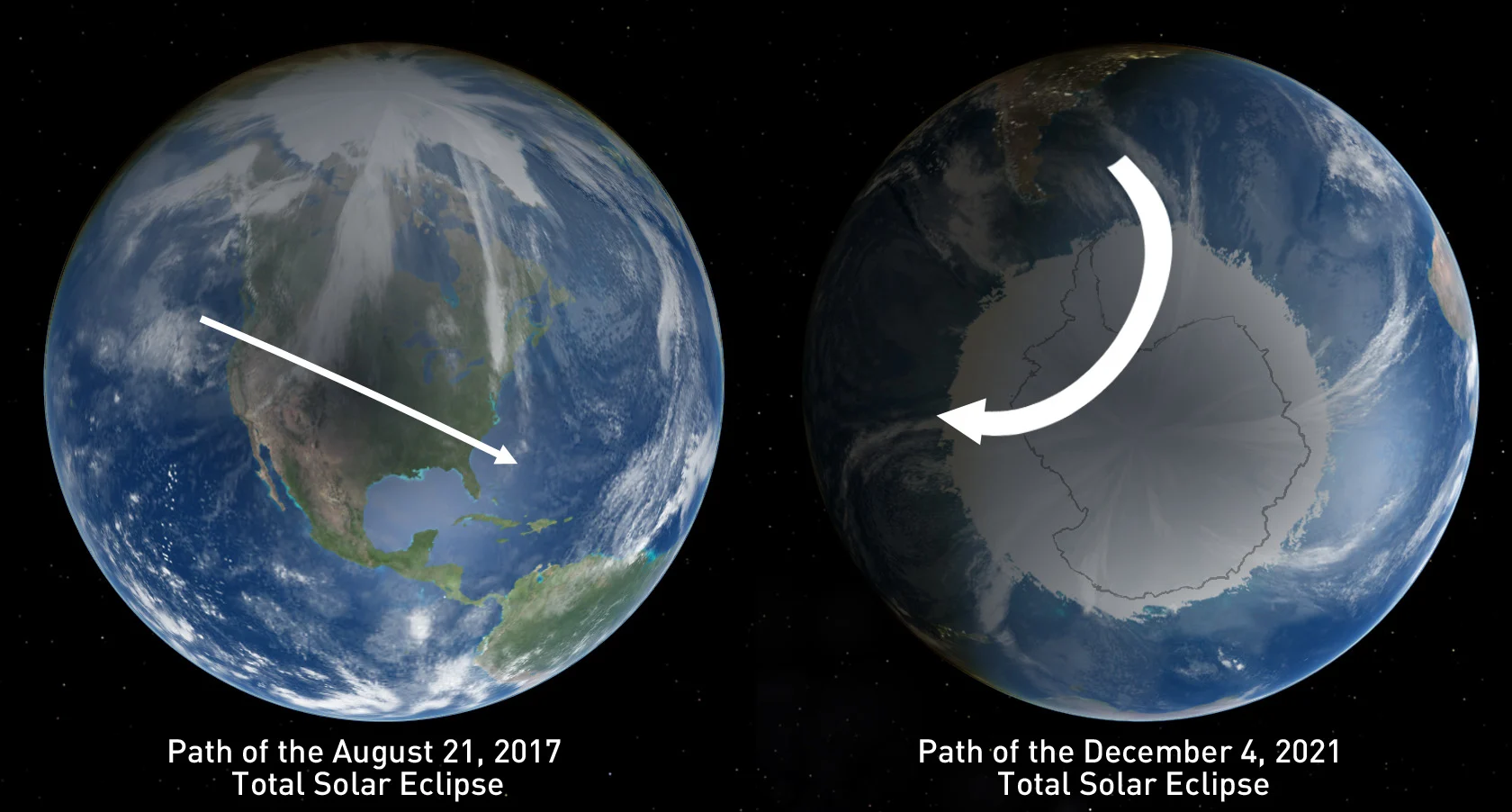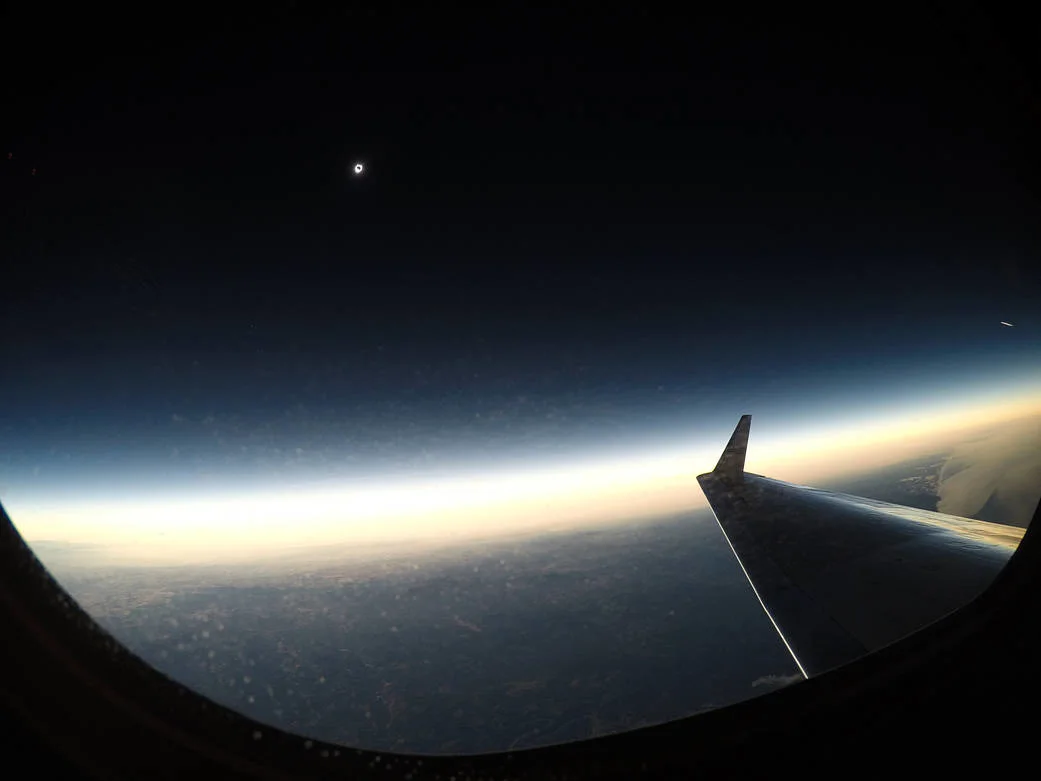
A 'backwards' total solar eclipse is happening tonight. Here's how to see it!
If we're lucky, we may get to watch this relatively rare Antarctic total solar eclipse.
Overnight from Friday into Saturday morning, the Earth, the New Moon, and the Sun will line up together for a total solar eclipse. This is going to be a strange one, though. Not only is it the first eclipse of its kind to pass over Antarctica in more than 18 years, but to those who may get to watch it, it's going to look backwards!
If you're up late on Friday night, tune in to NASA TV for a chance to see 2021's second total solar eclipse of the year, and the last one that will pass over the continent of Antarctica until the year 2039!
For viewers from North America, this eclipse is going to appear to be a little unusual.
First of all, even though it's a solar eclipse, it will be occurring in the middle of the night! NASA's live stream, which is embedded below, starts at 1:30 a.m. EST on the morning of Saturday, December 4.
According to NASA, the eclipse will reach its peak at 2:44 a.m. EST, and it will end at 3:37 a.m. EST.
If weather permits, the livestream will be presented from Union Glacier in Antarctica, by Theo Boris and Christian Lockwood of the JM Pasachoff Antarctic Expedition.
IT'S BACKWARDS!!
Another unusual aspect of this eclipse is the direction it follows as it takes place.
Normally, when watching a solar eclipse (safely, while wearing protective mylar eclipse glasses, of course), the Moon appears to pass across the disk of the Sun from right to left.

This simulated view shows the Moon and Sun before, during and after the December 4 eclipse, as seen from the path of totality in West Antarctica. During the event, the Moon will appear to pass from right to left in front of the Sun, rather than the left-to-right pass that we are used to seeing. Credit: Stellarium/Scott Sutherland
This Antarctic solar eclipse is an exception. Those watching it (again, safely) will see the Moon pass across the disk of the Sun from left to right!
The reason for this is due to being in the far southern hemisphere, with the Sun and Moon low to the horizon in the Antarctic sky. By necessity, anyone watching or recording it with cameras will be looking at the two celestial objects 'upside down' compared to what we see in the northern hemisphere.
However, this eclipse is backwards in another respect as well.
Normally during a solar eclipse, the shadow of the Moon passes across the surface of Earth from west to east. We saw this during the August 21, 2017 eclipse, and the other eclipses that have happened since then. During this solar eclipse, however, the shadow of the Moon will actually start in the east — technically — and end in the West.

Screen-captures from the Celestia astronomy program have been combined with NASA eclipse data for this comparison of the August 2017 and December 2021 total solar eclipses. Credit: Celestia/NASA Eclipse/Scott Sutherland
Now, the only reason it is ending farther west than it began is because it is essentially 'jumping the pole' in the middle of the event. To be honest, the geometry of astronomical events, when you're that far south, gets a little unusual.
Hopefully, the JM Pasachoff Antarctic Expedition will have clear skies over their camp during the event, so they can provide live footage of the eclipse as it happens. If not, there is another opportunity for us to see images or possibly video from this eclipse.
ECLIPSE VIEWING FROM 37,000+ FEET
Dr. Glenn Schneider of the University of Arizona's Steward Observatory is leading an airborne expedition on December 4, to fly through the path of totality.
According to the expedition website, EFlight 2021-Sunrise will consist of two jetliners flying out of Punta Arenas in Southern Chile. One will fly at 37,000 feet, while the other will fly at 39,000 feet. Their plan is to intercept the eclipse at the start of the event, and capture as much imagery and scientific data as they can.

A view of the August 2017 total solar eclipse from the window of a jet flying through the path of totality. Credit: NASA/Carla Thomas
Not only will these flights allow them to view the eclipse without concern for cloudy skies, but they will actually see the eclipse for longer than they would if they were on the ground. This is due to their altitude, but also because they will be able to fly along the path of totality, essentially following the Moon's shadow for some distance. They will also a clearer view of the eclipse, the Sun's corona, and other aspects of the event, because there will be less atmosphere above them than if they were on the surface.
All in all, if all goes as planned for the flights, they should bring back some exceptional views of this total solar eclipse.
